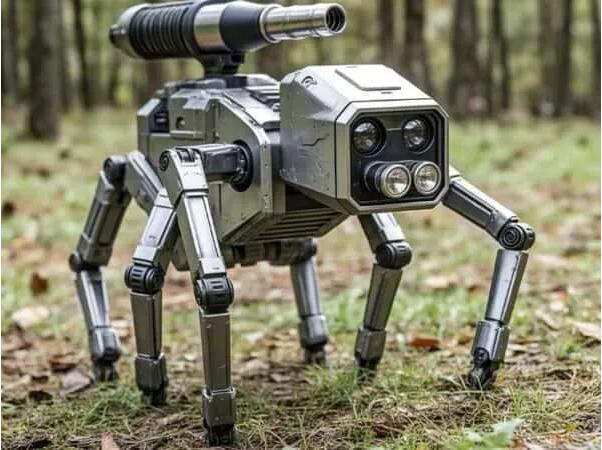Thin-Walled Bearings: Securing Core Performance in Firefighting Robot Dog Joint Design
Thin-Walled Bearings: Securing Core Performance in Firefighting Robot Dog Joint Design
Key Advantages: Lightweight & High Strength, Space-Saving & High Integration, High Precision & Low Friction, Adaptation to Complex Motions, Enhanced Joint Performance.
Fire-fighting robot dog operates in complex foreground environments, demanding stable movement and task execution. This places extremely high requirements on their joint systems: they must simultaneously achieve high load capacity, extreme flexibility, shock resistance, and a compact, lightweight design. Therefore, thin-walled bearings, serving as core components, play a pivotal role in delivering this essential performance.
- Lightweight & High Strength: Thin-walled bearings are designed to achieve significant load capacity within a minimal cross-section. Compared to traditional bearings, they substantially reduce the overall weight of the joints, which is crucial for robot dogs that require high maneuverability and long endurance. Furthermore, thin-walled bearings manufactured with special materials and processes (such as high-precision stainless steel or silicon nitride ceramic rollers) can withstand the high dynamic loads and impacts encountered during firefighting operations.
- Space-Saving & High Integration: The inherently compact structure of thin-walled bearings makes them particularly suited for the space-constrained joints of robot dogs. They can be seamlessly integrated into tight joint designs without occupying excessive space, thereby freeing up valuable real estate for other critical components like sensors or actuators.
- High Precision & Low Friction: Precision-engineered thin-walled bearings deliver smooth, low-friction rotational motion. This is indispensable for achieving the accurate and efficient motion control required by robot dogs, such as adjusting water spray angles, overcoming obstacles, or climbing stairs. Low friction contributes directly to higher energy efficiency and concurrently reduces heat generation.
- Adaptation to Complex Motions: Movements within a fireground (like rapid walking, running, stair climbing, or navigating rubble) demand joints capable of flexible, multi-angular, and multi-directional motion. The high precision and inherent flexibility of thin-walled bearings provide robust support for these complex movement patterns, ensuring smoothness, stability, and reliability of actions.
- Enhanced Joint Performance: The incorporation of these high-precision, high-strength thin-walled bearings (such as cross -roller bearings or equal-section thin-walled bearings) within the joints significantly enhances the overall performance of firefighting robot dogs. This translates into superior climbing capability, more stable stair navigation, and
- significantly improved shock resistance and stability.








